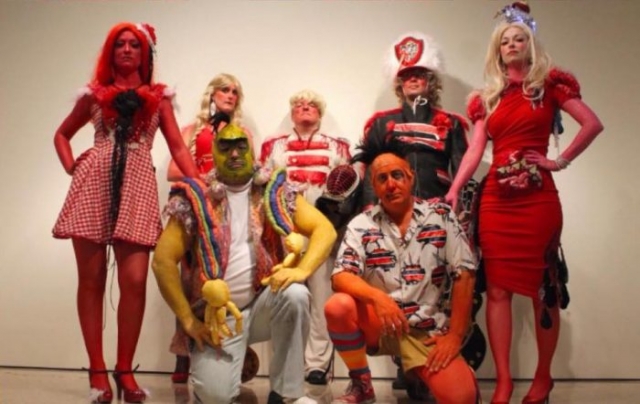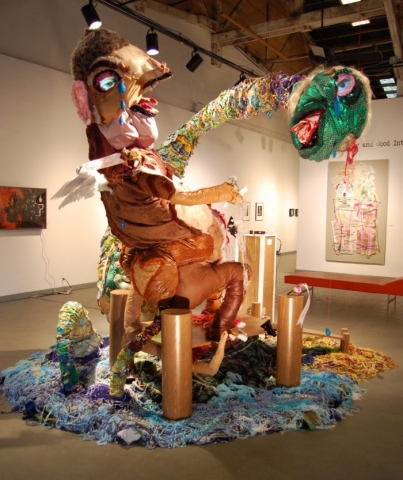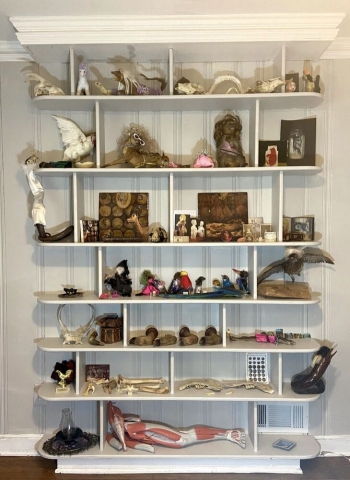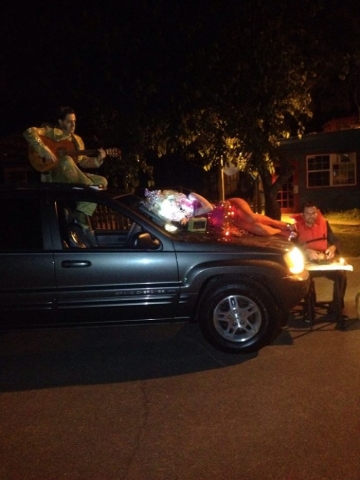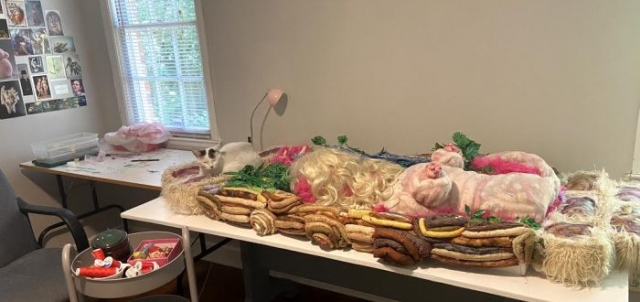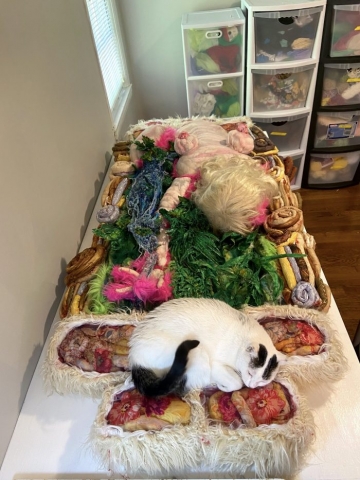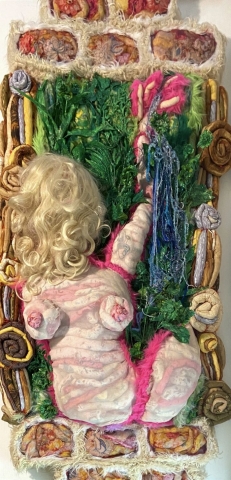
B20: Wiregrass Biennial showcases the region’s most talented contemporary artists, illustrating the South’s rich cultural heritage. The juried exhibition encourages innovative and progressive work that utilizes a variety of art forms and media and will feature paintings, sculptures as well as mixed media, new media and installation art. This year’s show features thirty-nine artists from eleven states.
B20 Artist Interview with Kelly Beohmer
B20: Wiregrass Biennial is a juried exhibition that encourages innovative and progressive work and showcases the South’s most talented contemporary artists, illustrating the region’s rich cultural heritage. Selected work utilizes a variety of art forms and media, including paintings, sculptures, mixed media, new media, and installation art. Three jurors chose from a field of over 130 entries for this year’s exhibition — the first virtual exhibition ever for WMA — featuring 39 artists from 11 states.
We’ll be sharing a series of interviews with B20 artists during the run of the exhibition, and our sixth is from Pooler, Georgia-based artist Kelly Boehmer.
Where do you find inspiration for your artistic practice?
I usually get an idea for a new work from Art History. I often use the colors, themes, compositions from works like the Capitoline She-Wolf, Laocoön Group, or Arnolfini Portrait. Contemporary art helps fuel my ideas for materials, techniques, and concepts. I am inspired by Monica Cook, David Altmejd, Mike Kelley, Louise Bourgeois, Yayoi Kusama, Claes Oldenburg, Ebony Patterson, and Roxanne Jackson. I also love listening to audiobooks while I’m in the studio, and getting lost in an epic classic novel. I think that a lot of the ideas from my work naturally develop from the stories that I listen to as I’m working.
How does living and working in the South impact your work?
First, Savannah is beautiful, and an inspiring place to live as an artist. Every tree seems to be dripping with Spanish moss. I try to get that same oozing quality in my sculptures. I also like the chaotic aesthetic of a tropical, southern landscape. This type of lush landscape seems to appeal to me, as more of a maximalist artist, where maybe a more sleek desert landscape might have a stronger appeal to a minimalist artist. My work is extremely slow-paced and labor intensive, because everything is sewn by hand. When I moved to the South, I learned to adapt and appreciate the slower, more reflective pace. I still sew in a frantic, raw, and aggressive manner, but I take my time, slowly assembling each piece, over several months.
How do you source your materials, and are there any that you’ve reused to create Gut Lesson?
Yes, I love cutting up my old pieces to make new works. I did a collaboration with my husband, Chuck Carbia, that was a 20-foot installation of a Leviathan and Behemoth battling and singing. (Image below.) I used parts from the mouth of the leviathan for Gut Lesson. Originally, I made it with shark mouths and created the foaming in the mouth with Gorilla glue. The arms were part of a unicorn sculpture, and the orange sections of the stomach were from a costume I used in a performance with Chuck Carbia and George McConnell. (Image below.) I like how the small sections that I reuse seem to get more interesting each time I use them.
People have been really generous and often give me materials for my work. Sometimes friends, family, and students will bring me bones, etc. that they find by the side of the road, or interesting yard sale finds. I like to buy the scraps of animal hides, and damaged or old taxidermy that people tend to find less desirable.
Since you are a performance artist as well, is there any intersection between your performances and your strictly visual works?
Yes! I am a background singer with the performance art band, Glitter Chariot. The performances are melodramas that look sculptural. I love getting to work on costumes for our shows (Header image – note: artist Maggie Evans who is also in the exhibition, is on the left, back row). As a group, we often use gory imagery, like fake blood, to symbolize emotional turmoil. This might be the strongest link to my visual work. For example, in Gut Lesson, the work touches on how we are supposed to learn through painful experiences. It depicts a dissected frog that I thought would be an image that most people could relate to, to use as a symbol of an experience related to learning through pain/death.
As a professor, what do you hope your students learn from you?
I try to encourage students to trust their own process, to take risks, and if they run into artist’s block they can find the answers they need in research. I share how I was not the most “naturally talented” student, and I just worked extra hard to get caught up to other students around me.
Mostly I just try to be encouraging and supportive, but also have high expectations, and continually push them to go even further. I am lucky that I work with such amazing students at SCAD. I think that I learn as much from them as I hope they do from me. Teaching feels like another type of collaboration, like what I do with my performance art.
I read that you started your artistic journey as a painter. Besides changing mediums, how else has your work evolved?
I transitioned from making paintings to making large-scale installations. Now, I am trying to get the same impact that I had in the installations, on a canvas. It has been much more than just a shift in the medium. I feel like now it is a much more intimate and vulnerable relationship that I have with the viewer. This happens through both the materials and the subject matter. I am working with sheer, delicate fabrics that the viewer has to peer through, that show visceral imagery.
Is there anything new you are working on that you’d like to share with us?
Right now, I am super excited about researching Duchamp for a work that I am making inspired by his work “Given” (Étant donnés: 1° la chute d’eau / 2° le gaz d’éclairage) (Images below – the last images include my studio and “studio assistant”, “Sparkles”). The more I read about this piece, the more I find it mysterious, intense, disturbing, and beautiful.

